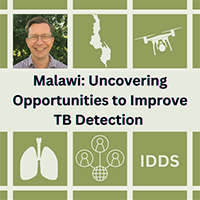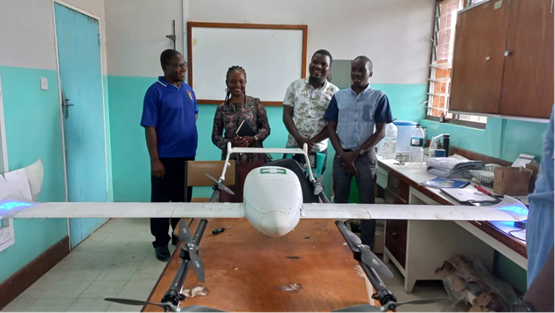Malawi: Uncovering Opportunities to Improve TB Detection

![]() By: Erik Reisdorf
By: Erik Reisdorf
Though tuberculosis (TB) has infected humans for thousands of years, detecting and diagnosing the disease remains surprisingly difficult. TB is the world’s thirteenth most common cause of death, and the second-leading infectious killer after COVID-19. In 2021, 10.6 million people fell ill with TB, including 1.2 million children, and 1.6 million people died.
From community health clinics to centrally located reference laboratories, many organizations play a role in determining whether a patient is ill with TB, and together they comprise the “diagnostic network.” One of the first steps to improving detection of TB is understanding the capabilities of the network, services offered and their locations, and challenges that prevent the network from performing efficiently and effectively. To do so, many countries have commissioned a “diagnostic network assessment,” or DNA, that analyzes gaps in the network and opportunities for improving its function.
USAID’s Infectious Disease Detection and Surveillance (IDDS) project partners with national TB programs to complete TB DNAs. IDDS works to improve disease detection and surveillance systems and has supported DNAs in Ethiopia, Tanzania, Uganda, Vietnam, and Zimbabwe. Drawing on lessons learned from these experiences, the project recently implemented a DNA in Malawi, a country where TB is the fourth leading cause of death and sickens more than 25,000 per year.
For Malawi’s DNA, seven teams of international and local assessors visited health facilities in 22 districts in January 2023. Participants from the national TB program and local observers from the Ministry of Health also attended the visits, which created buy-in from program staff to implement the recommendations to strengthen the network. This also builds capacity of national program staff to lead re-assessments in the future.
One notable finding is Malawi’s expansion of the diagnostic network to include private health care facilities. Public-private partnerships are one strategy to improve access to testing for TB, which can help to reduce the spread of the disease in the community. I recently visited Mwaiwathu Private Hospital, which provides testing free of charge to patients, using government-supplied Xpert® MTB/RIF Ultra test cartridges. The hospital’s laboratory also refers patients’ specimens to the public reference laboratories for additional drug resistance testing.
Stakeholders are already working together to employ creative solutions in the face of daunting challenges. One innovation that I encountered while visiting a peripheral-level laboratory in the rural Chikwawa district was the use of drones to transport patient specimens, as well as medical and laboratory supplies. Before drones were used, flooding during the rainy season rendered roads impassable and delayed specimens from arriving at laboratories for days. Ensuring timely specimen referrals to laboratories is key to improving the rate of testing for resistance to TB drugs so that doctors can adjust patient treatments and improve health outcomes.
Though the DNA will guide future collaborative programming to address gaps in the diagnostic network, IDDS is already working to provide new diagnostic equipment and training in Malawi. For instance, IDDS is working with the Stop TB Partnership to provide four Truenat® instruments to sites in Malawi that will use them to detect both TB and drug-resistant TB cases. IDDS is also refurbishing the Ekwendeni Mission Hospital in Malawi and providing the site with X-ray equipment that can aid in TB diagnosis.
Even as the team compiles their recommendations from the DNA, IDDS will continue to advance TB detection in Malawi through interventions like these. I look forward to continued collaboration with our partners in Malawi, including the national TB program and Ministry of Health, as we work together to end TB.

ABOUT THE AUTHOR

Erik Reisdorf is a diagnostic networks manager at ICF for the Infectious Disease Detection and Surveillance (IDDS) project funded by USAID. IDDS strengthens the ability of health systems in low- and middle-income countries to detect, track, and respond to infectious disease threats. The views expressed here are the author’s; they do not necessarily represent those of USAID or the U.S. government.




Responses